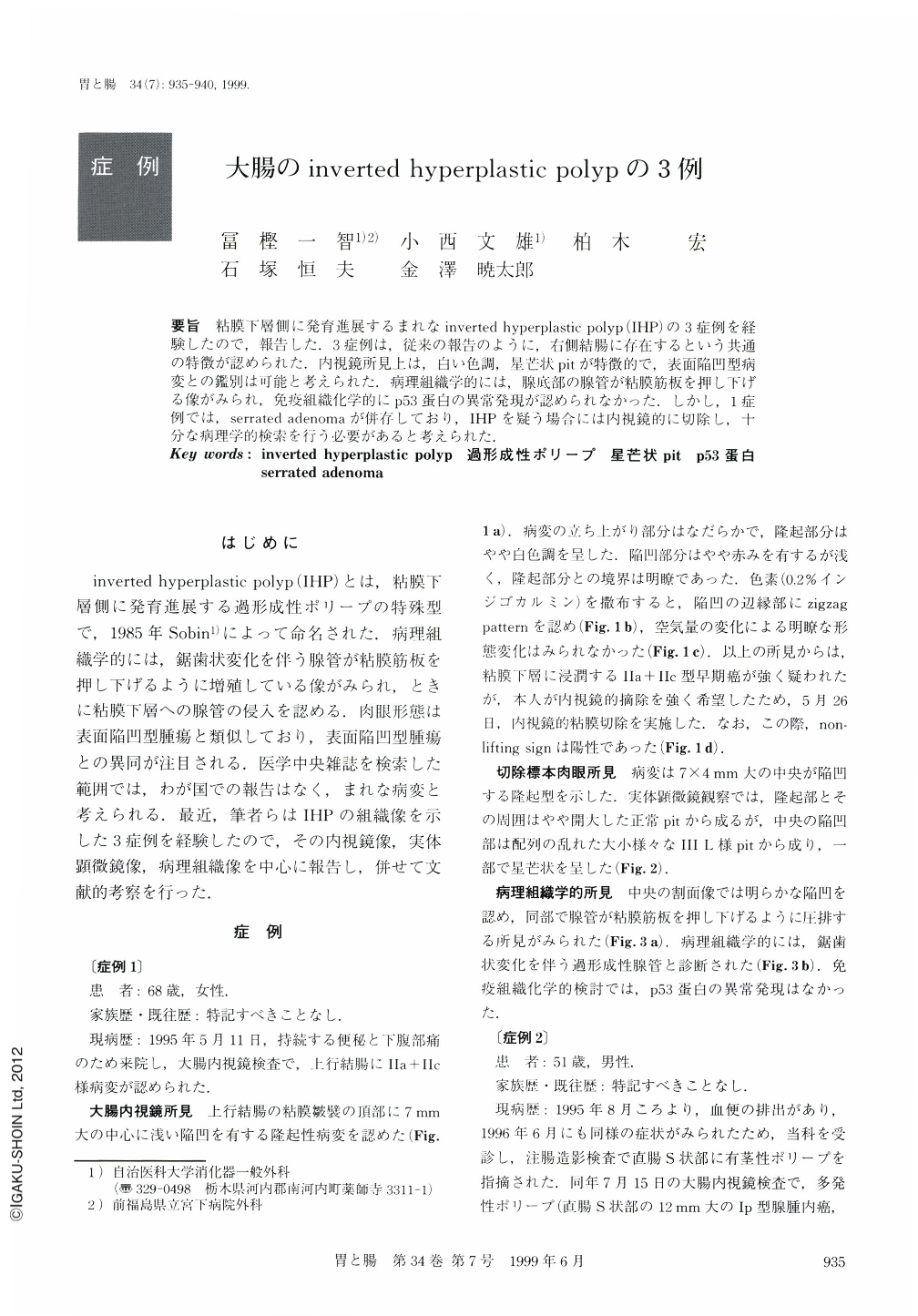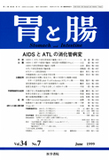Japanese
English
- 有料閲覧
- Abstract 文献概要
- 1ページ目 Look Inside
- サイト内被引用 Cited by
要旨 粘膜下層側に発育進展するまれなinverted hyperplastic polyp(IHP)の3症例を経験したので,報告した.3症例は,従来の報告のように,右側結腸に存在するという共通の特徴が認められた.内視鏡所見上は,白い色調,星芒状pitが特徴的で,表面陥凹型病変との鑑別は可能と考えられた.病理組織学的には,腺底部の腺管が粘膜筋板を押し下げる像がみられ,免疫組織化学的にp53蛋白の異常発現が認められなかった.しかし,1症例では,serrated adenomaが併存しており,IHPを疑う場合には内視鏡的に切除し,十分な病理学的検索を行う必要があると考えられた.
Inverted hyperplastic polyp (IHP) is an unusual form of hyperplastic colonic polyp, which is characterized by an endophytic growth pattern. IHP is similar to a depressed type neoplastic lesion in gross appearance. Recently, we have encountered three cases of IHP, which were detected by colonoscopy.
Case 1: A 68-year-old female underwent colonoscopy for severe constipation and mild abdominal pain. A 7 mm Ⅱa + Ⅱc-like lesion resembling an invasive carcinoma, with a slightly pale appearance was detected on a fold in the ascending colon. The lesion was removed endoscopically at the patient's request. On stereomicroscopy, a hyperplastic type pit pattern was observed in some areas. The cross section revealed an apparent depression. Histologically, the lesion was diagnosed as a hyperplastic polyp with hyperchromatic tubules extending towards the muscularis mucosae in the lower part of the crypts. p-53 was not over-expressed.
Case 2: A 51-year-old male underwent surveillance colonoscopy following polypectomy. A 4 mm hemispheric lesion with a central depression was detected in the caecum. Magnifying colonoscopy revealed no evidence of neoplastic type pit pattern in any area. The lesion was removed endoscopically, and the cross section revealed an apparent depression. Histology was very similar to that of Case 1.
Case 3: A 54-year-old male underwent surveillance colonoscopy following colorectal cancer surgery. A 7 mm flat pale lesion with a central shallow depression was detected behind a fold in the ascending colon. On magnifying colonoscopy, a hyperplastic type pit pattern was observed on the marginal elevated area. The lesion was resected endoscopically and histologically was found to be a serrated adenoma in a hyperplastic polyp. In the serrated adenoma part, hyperchromatic tubules invaded the muscularis mucosae. p-53 was not over-expressed.
In conclusion, IHP can be distinguished from a depressed neoplastic lesion by its pale appearance and hyperplastic type pit pattern. However, colonoscopic removal of IHP is recommended because the possibility of neoplasia in such lesions cannot be disregarded.

Copyright © 1999, Igaku-Shoin Ltd. All rights reserved.


